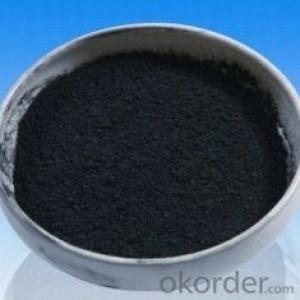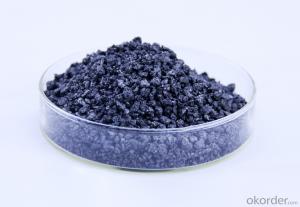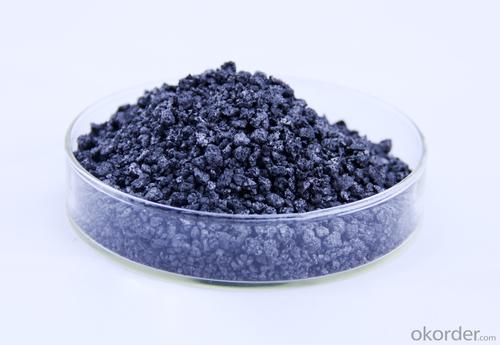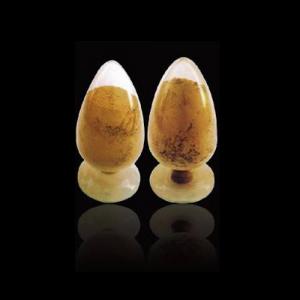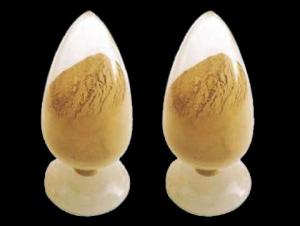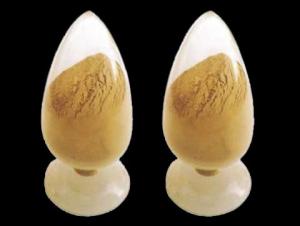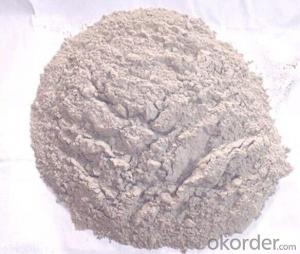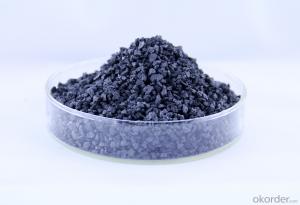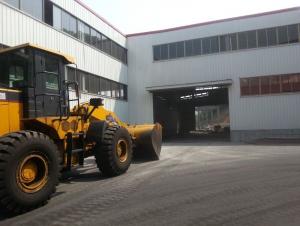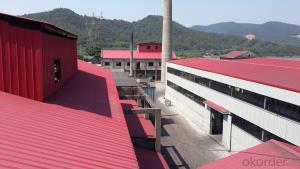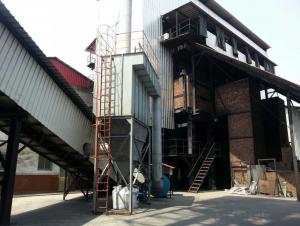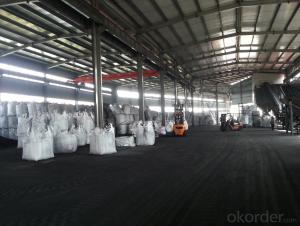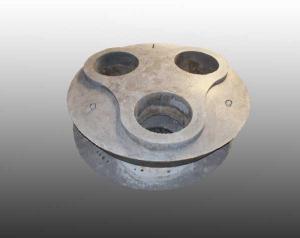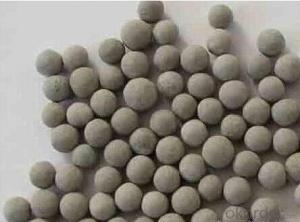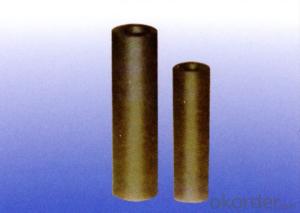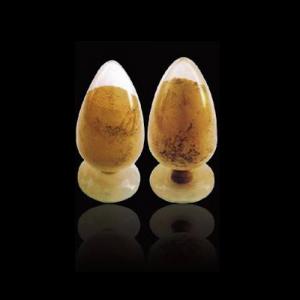Monolithic Refractories Calcined Petroleum Coke 1-3mm FC:98.5%min for Iron and Steel Industry
- Loading Port:
- Shekou
- Payment Terms:
- TT OR LC
- Min Order Qty:
- 20 m.t
- Supply Capability:
- 1000 m.t/month
OKorder Service Pledge
OKorder Financial Service
You Might Also Like
Factory Background
The factory is majorly running and operating carbon additive (pitch coke, calcined petroleum coke and anthracite), low nitrogen carbon additive, and brake pad making material. Company is the long term supplier of Sinosteel Corporation, Shanghai Carbon Corporation, the plant of SGL Group the Carbon Company in China and some largest special carbon products producing plants.
YUAI also supplies huge amout of high quality carbon additive and graphite carbon additive to steel plants, foundries and ferrotungsten plants. YUAI has been assigned by BAO STEEL as the only organization for processing pitch coke for export purpose. The group’s major products are constantly exported to Japan, Korea, Malaysia, South East Asia countries, Europe and America, which receive praises by our consumers.
The group has invested numbers of calcinators in Anhui China to ensure the capability of producing and processing huge amount of carbon additive. Further investment is on process. According to the orders from customers, YUAI is able to processing and providing different specifications of carbon additive and other products. To provide best quality of products and to offer customers most satisfied service is YUAI’s operating objectives.
Calcined Petroleum Coke
FC:98.5%min,
S:0.5%max
A:0.8%max
V:0.7%max
Mositure:0.5%max
Size:1-5mm
This product is mainly used in steel-making and foundry. Calcined Petroleum Coke
Calcined Petroleum Coke comes from delayed coke which extracted from oil refinery. Although Calcined Petroleum Coke contains a little bit higher level of sulfur and nitrogen than pitch coke, the price advantage still makes it widely used during steel-making and founding as a kind of carbon additive/carburant.
Packaging & Delivery
Packaging Detail:25kg paper bag into 1t weaving bag 5kg, 10kg and 20kg weaving bag into 1t weaving bag 25kg weaving bag put on pallet covered with entanglement wrap product direct into packing bag 25kg paper bag put on pallet covered with entanglement Wrap 25kg weaving bag into 1t weaving bag.
Delivery Details: 7 days
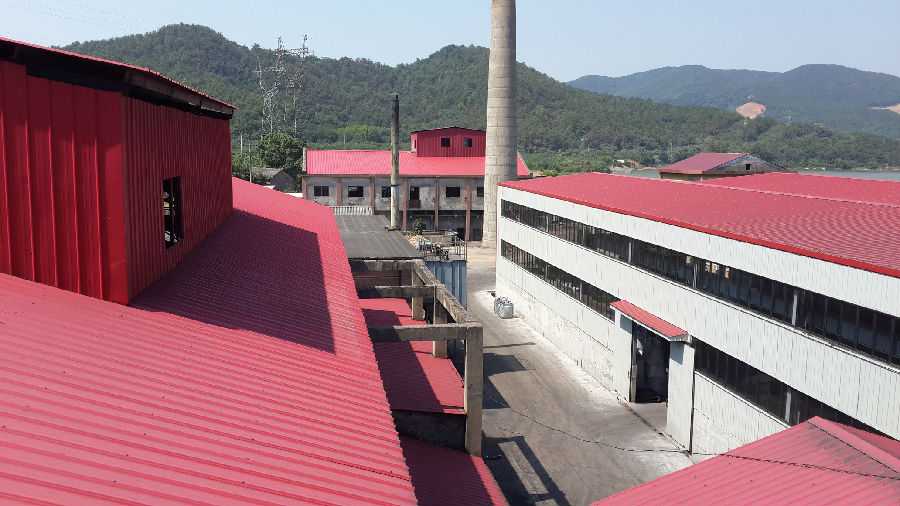
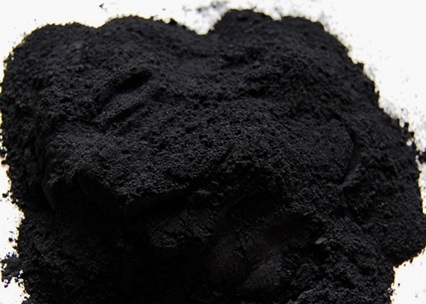
- Q: How do monolithic refractories improve the efficiency of reheating furnaces in steel plants?
- Monolithic refractories improve the efficiency of reheating furnaces in steel plants by providing a superior lining material that offers high thermal conductivity, excellent heat resistance, and resistance to thermal shock. These refractories help to minimize heat loss and improve heat transfer, resulting in reduced energy consumption and increased furnace productivity. Additionally, the use of monolithic refractories eliminates the need for time-consuming bricklaying, allowing for quicker furnace start-up times and reduced maintenance downtime.
- Q: How do monolithic refractories impact the overall productivity of iron and steel operations?
- Monolithic refractories have a significant impact on the overall productivity of iron and steel operations. These refractories are used to line the furnaces, ladles, and other high-temperature equipment, providing insulation and protection against extreme heat, chemical reactions, and mechanical wear. By ensuring the integrity and durability of these critical components, monolithic refractories enhance the efficiency and longevity of iron and steel production processes. They minimize downtime caused by frequent repairs or replacements, improve thermal management, and optimize energy consumption. Ultimately, the use of monolithic refractories leads to increased productivity, reduced costs, and improved quality control in iron and steel operations.
- Q: What are the typical operating temperatures for monolithic refractories?
- The specific composition and type of refractory material determine the typical operating temperatures for monolithic refractories. Generally, these refractories are designed to endure high temperatures ranging from 1500°C (2732°F) to 1800°C (3272°F) and sometimes even higher. Industries such as steelmaking, cement production, glass manufacturing, and petrochemical processing commonly utilize these refractories, subjecting them to extreme thermal conditions. Temperature limits vary for different types of monolithic refractories. For example, basic refractories made of magnesia or dolomite can withstand temperatures up to 1800°C (3272°F). Conversely, alumina-based refractories typically handle temperatures up to 1700°C (3092°F). Silicon carbide-based refractories exhibit even higher temperature resistance, with the capacity to endure temperatures exceeding 2000°C (3632°F). Choosing the appropriate monolithic refractory material is crucial, considering the specific operating temperature requirements of the application. Using refractories beyond their recommended temperature limits may result in thermal shock, spalling, reduced performance, equipment failure, or safety hazards. Therefore, it is essential to consult with refractory manufacturers or experts in the field to ensure the correct selection and optimal performance of monolithic refractories in high-temperature applications.
- Q: How long is the lifespan of monolithic refractories in iron and steel applications?
- The lifespan of monolithic refractories in iron and steel applications can vary depending on several factors such as the specific type of refractory material used, the operating conditions, and the maintenance practices. However, on average, monolithic refractories in iron and steel applications can last anywhere from a few months to several years.
- Q: What are the advantages of using plastic refractories in the iron and steel industry?
- Plastic refractories provide numerous benefits in the iron and steel industry. Firstly, their thermal insulation properties are exceptional. They possess a low thermal conductivity, enabling them to effectively retain heat and prevent excessive heat loss during manufacturing. This is critical for the proper functioning of furnaces and equipment, as maintaining high temperatures is essential. Secondly, plastic refractories exhibit superior resistance to chemical attack and corrosion. They can endure exposure to various chemicals, including molten metals and slag, without deteriorating or losing their structure. This is particularly important in an industry where materials frequently encounter highly corrosive substances. Moreover, plastic refractories offer the advantage of easy installation and repair. Unlike other refractory materials, they can be easily shaped and molded into the desired form. This allows for precise fitting and swift installation. Additionally, if damaged or worn, they can be easily repaired or patched, reducing downtime and maintenance costs. Additionally, plastic refractories possess excellent mechanical strength and abrasion resistance. This enables them to endure the physical stresses and mechanical forces present in the iron and steel industry, such as vibrations, impacts, and mechanical loading. Their high resistance to wear and tear ensures longevity and reduces the need for frequent replacements. Lastly, plastic refractories have a high resistance to thermal shock. They can withstand rapid temperature changes without cracking or spalling. This is advantageous in an industry where materials are subjected to extreme temperature differentials, such as during the heating and cooling cycles of furnaces. In conclusion, the utilization of plastic refractories in the iron and steel industry provides numerous advantages including excellent thermal insulation, resistance to chemical attack, ease of installation and repair, good mechanical strength, abrasion resistance, and high thermal shock resistance. These properties make plastic refractories an ideal choice for various applications, ensuring efficient and reliable operations.
- Q: What are the key innovations in monolithic refractories for the iron and steel industry?
- The iron and steel industry heavily relies on monolithic refractories, which serve as lining materials in various high-temperature processes like blast furnaces, ladles, and converters. Over time, the field of monolithic refractories has witnessed several crucial innovations that address specific challenges and enhance the overall performance of these linings. Among the significant innovations in monolithic refractories is the emergence of low cement and ultra-low cement castables. These castables contain reduced cement quantities, resulting in improved properties such as higher hot strength, better thermal shock resistance, and enhanced resistance to chemical attack. By decreasing the cement content, the refractory achieves higher density, reduced porosity, and increased mechanical strength, ultimately leading to improved durability and extended service life. Another innovation in monolithic refractories is the introduction of self-flowing castables. These castables are designed to exhibit excellent flowability and can be conveniently installed through pouring or pumping, eliminating the need for manual vibration. Self-flowing castables offer advantages like reduced installation time, improved lining quality, and enhanced performance in complex geometries or hard-to-reach areas. In recent years, advances in nanotechnology have also influenced the development of monolithic refractories. Refractory compositions now incorporate nanoparticles, such as nano-sized additives and binders, to enhance their properties. These nanoparticles enhance the refractory's mechanical strength, thermal conductivity, and corrosion resistance. Additionally, nanotechnology enables better control over refractories' microstructure, resulting in optimized performance and increased lifespan. The development of high-performance monolithic refractories has also been driven by the need for improved energy efficiency and reduced environmental impact. Insulating castables, for instance, have been created to provide excellent thermal insulation properties, leading to reduced heat loss and energy consumption in various applications. These refractories contribute to increased energy efficiency, lowered production costs, and minimized greenhouse gas emissions. Moreover, advanced installation techniques like gunning and shotcreting have revolutionized the application of monolithic refractories. These techniques enable faster and more precise installation, reducing downtime and improving productivity. Additionally, robotic application systems have been introduced, allowing for automated and consistent refractory installation, ensuring high-quality linings with minimal human intervention. In conclusion, key innovations in monolithic refractories for the iron and steel industry encompass the development of low cement and ultra-low cement castables, self-flowing castables, the incorporation of nanotechnology, the introduction of high-performance insulation materials, and advancements in installation techniques. These innovations have significantly enhanced the performance, durability, energy efficiency, and installation processes of monolithic refractories, thereby contributing to the overall efficiency and competitiveness of the iron and steel industry.
- Q: How do monolithic refractories resist chemical attack from molten metals and slags?
- A combination of factors enables monolithic refractories to withstand chemical attack from molten metals and slags. Firstly, these refractories are composed of high-quality materials with excellent chemical resistance properties, such as alumina, magnesia, or silica. These materials possess a stable chemical structure that can endure the corrosive nature of molten metals and slags. Secondly, additives or binders are often incorporated into monolithic refractories to enhance their resistance to chemical attack. By improving the refractory's capability to form a protective layer on its surface, these additives act as a barrier between the refractory material and the corrosive molten metal or slag. Furthermore, monolithic refractories are designed with a dense microstructure that restricts the infiltration of molten metals and slags. This dense structure minimizes the pathways through which corrosive agents can reach the refractory material, effectively reducing the risk of chemical attack. In addition, proper joint design and anchoring systems can be employed during the installation of monolithic refractories to prevent the infiltration of corrosive substances. This ensures that the refractory lining remains intact and capable of effectively resisting chemical attack. In summary, the combination of high-quality materials, additives, dense microstructure, and proper installation techniques contribute to the ability of monolithic refractories to resist chemical attack from molten metals and slags. This, in turn, extends their lifespan and maintains the integrity of the refractory lining in high-temperature applications.
- Q: What are the common testing methods used to evaluate the performance of monolithic refractories?
- To evaluate the performance of monolithic refractories, various commonly used testing methods are employed. These methods aid in determining the durability and suitability of refractory materials for different applications. Some of the frequently utilized testing methods include: 1. Thermal Conductivity Testing: This method gauges the heat conductivity of a refractory material. It assists in assessing the insulation properties and resistance to thermal shocks. 2. Compression Testing: This test measures the compressive strength of the refractory material. It provides insights into its ability to withstand external forces and pressure without fracturing or deforming. 3. Abrasion Testing: This method assesses the refractory material's resistance against wear and tear caused by abrasive forces. It helps evaluate its ability to endure erosive conditions and prolonged exposure to harsh environments. 4. Creep Testing: By measuring the deformation or sagging of the refractory material under high temperatures and constant loading, this testing method assesses its resistance to deformation and ability to maintain shape over time. 5. Thermal Expansion Testing: This test determines the expansion and contraction characteristics of the refractory material when exposed to different temperatures. It aids in evaluating its ability to withstand thermal cycling without cracking or fracturing. 6. Chemical Resistance Testing: This method evaluates the refractory material's resistance to chemical attacks, such as corrosion or erosion resulting from chemical reactions. It assists in determining its suitability for applications involving contact with corrosive substances. 7. Refractoriness Under Load (RUL) Testing: This test measures the refractory material's ability to withstand high temperatures while maintaining structural integrity. It aids in assessing its resistance to thermal stresses and suitability for high-temperature applications. These testing methods provide valuable data for evaluating the performance of monolithic refractories and ensuring their appropriateness for specific industrial applications. By considering these properties, manufacturers and users can make well-informed decisions regarding the selection and usage of refractory materials.
- Q: How do monolithic refractories contribute to the overall efficiency of ladle cleaning operations?
- Monolithic refractories play a crucial role in enhancing the overall efficiency of ladle cleaning operations. These refractory materials, which are composed of a single, homogeneous structure, offer several key advantages that contribute to improved efficiency. Firstly, monolithic refractories have excellent thermal insulation properties. This means they can withstand high temperatures without cracking or deteriorating, allowing for more efficient and effective ladle cleaning operations. By maintaining a consistent temperature, these refractories minimize heat loss and ensure that the cleaning process can be carried out without interruptions or delays. Secondly, monolithic refractories have high resistance to chemical attacks. Ladles used in steelmaking processes often come into contact with aggressive molten metals and slag, which can erode and corrode the refractory lining. However, monolithic refractories are specifically designed to withstand these harsh conditions, ensuring a longer service life and reducing the need for frequent repairs or replacements. This not only saves time but also reduces the overall cost of ladle maintenance. Furthermore, monolithic refractories have excellent flowability and workability. They can be easily shaped and installed in the ladle lining, allowing for quick and precise application. This ease of installation translates into shorter downtime during ladle cleaning operations, as the refractory lining can be repaired or replaced swiftly. Additionally, the flowability of monolithic refractories enables better coverage and adherence to the ladle's surface, ensuring that no gaps or weak points are left behind. This enhances the overall effectiveness of the cleaning process and prevents any potential contamination or reactivity issues. In conclusion, monolithic refractories contribute to the overall efficiency of ladle cleaning operations by providing excellent thermal insulation, high resistance to chemical attacks, and easy workability. These properties result in reduced downtime, increased durability, and cost savings, making monolithic refractories a vital component in optimizing ladle cleaning processes.
- Q: What are the typical properties of monolithic refractories used in iron and steel industry?
- Monolithic refractories used in the iron and steel industry generally possess several key properties that make them suitable for the harsh operating conditions in these industries. Firstly, monolithic refractories have excellent thermal shock resistance. They can withstand rapid temperature changes without cracking or spalling, which is crucial in the iron and steel industry where the heating and cooling processes can be highly intense. Secondly, these refractories exhibit high refractoriness, meaning they can withstand extremely high temperatures without losing their strength or shape. This is essential in environments where temperatures can reach well above 1000 degrees Celsius. Additionally, monolithic refractories used in the iron and steel industry are known for their excellent corrosion resistance. They can resist the corrosive effects of molten metals, slags, and gases that are commonly encountered in these industrial processes. Furthermore, these refractories have good mechanical strength and abrasion resistance, allowing them to withstand the physical stresses and wear caused by handling and mechanical operations. Another important property of monolithic refractories is their ability to form strong bonds with the existing refractory lining. This ensures a secure and long-lasting installation, reducing the risk of failure and minimizing downtime for maintenance or repairs. Lastly, these refractories often have low porosity, which prevents the infiltration of molten metal or slag into the lining. This helps to maintain the integrity of the refractory structure and prolong its service life. Overall, the typical properties of monolithic refractories used in the iron and steel industry include thermal shock resistance, high refractoriness, corrosion resistance, mechanical strength, strong bonding, and low porosity. These properties collectively contribute to the efficient and reliable operation of iron and steel manufacturing processes.
Send your message to us
Monolithic Refractories Calcined Petroleum Coke 1-3mm FC:98.5%min for Iron and Steel Industry
- Loading Port:
- Shekou
- Payment Terms:
- TT OR LC
- Min Order Qty:
- 20 m.t
- Supply Capability:
- 1000 m.t/month
OKorder Service Pledge
OKorder Financial Service
Similar products
Hot products
Hot Searches
Related keywords
